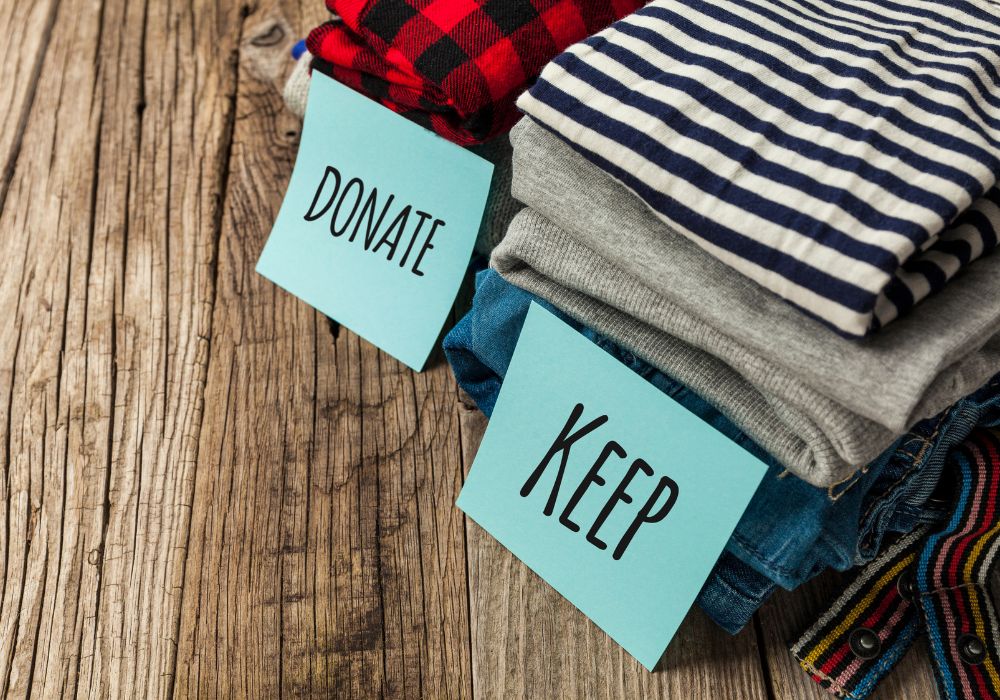Spring is a classic time to shed the layers of winter and freshen up our homes. A big part of that process is decluttering. At best, too many possessions can make a home appear cluttered, and at worst, they can make a home unlivable. Clutter has also been shown to be disruptive to our mental health and feelings of psychological safety.
However, starting the cleaning process can feel overwhelming. How do you know what you might want or need someday? Here are some decluttering tips to help the process feel more manageable.
One of the hardest parts of decluttering is getting started. Make a schedule for yourself that can help you work through the spaces of your home without feeling too intimidated or overwhelmed. For instance, maybe you start with your own closet for two hours on a Sunday. Knowing you have a time limit will also help you work through your items more quickly, as lingering and obsessing over which items to keep is all part of the process. This will also help you get through smaller portions at a time, so that you’re not making your home dysfunctional by pulling out everything all at once.
An easy target for decluttering is getting rid of things with expiration dates or recommended use-dates, whether that’s sunscreens, medicines, makeups, or canned food. You can also get rid of dysfunctional objects that don’t work well any more, from old technology to worn down shoes to food storage containers without lids. Throw away objects or recycle as is appropriate.
One great way to save space is to identify items that you only need seasonally. Wash and store large bulky sweaters, scarves, thick blankets, boots and puffy coats in bins high up in the closet or attic. Conversely, in the wintertime, swap those items with summer gear such as flip flops, shorts, tank tops, and wide-brimmed hats. This will make it much easier to sort through your closets and living areas for the items you actually need.
One of the most satisfying parts of decluttering is knowing that our things may find better homes. When deciding which items to donate, pick things that are still in good condition. Clothes or objects in poor condition will likely be thrown away at the donation centers. If you’re donating clothes, make sure they’ve been cleaned before giving them away. While you can take items to places like a thrift store, you don’t even need to leave your home if you don’t want to. Online groups such as Facebook’s “Buy Nothing” will allow you to post items for giveaway and have your item picked up directly at your home, if you like.
Looking to make money from your goods? Online websites like Poshmark or thredUP allow you to make money by posting your second-hand clothes. Craigslist or Facebook Marketplace is also a great way to get cash for items like furniture, backpacks, or more. Bookstores like Half Price thrive on donated books that are in good condition, and you may even be able to get some money back from some of your book donations there.
Questions about home insurance? Contact a Sea Mountain Insurance specialist today!
